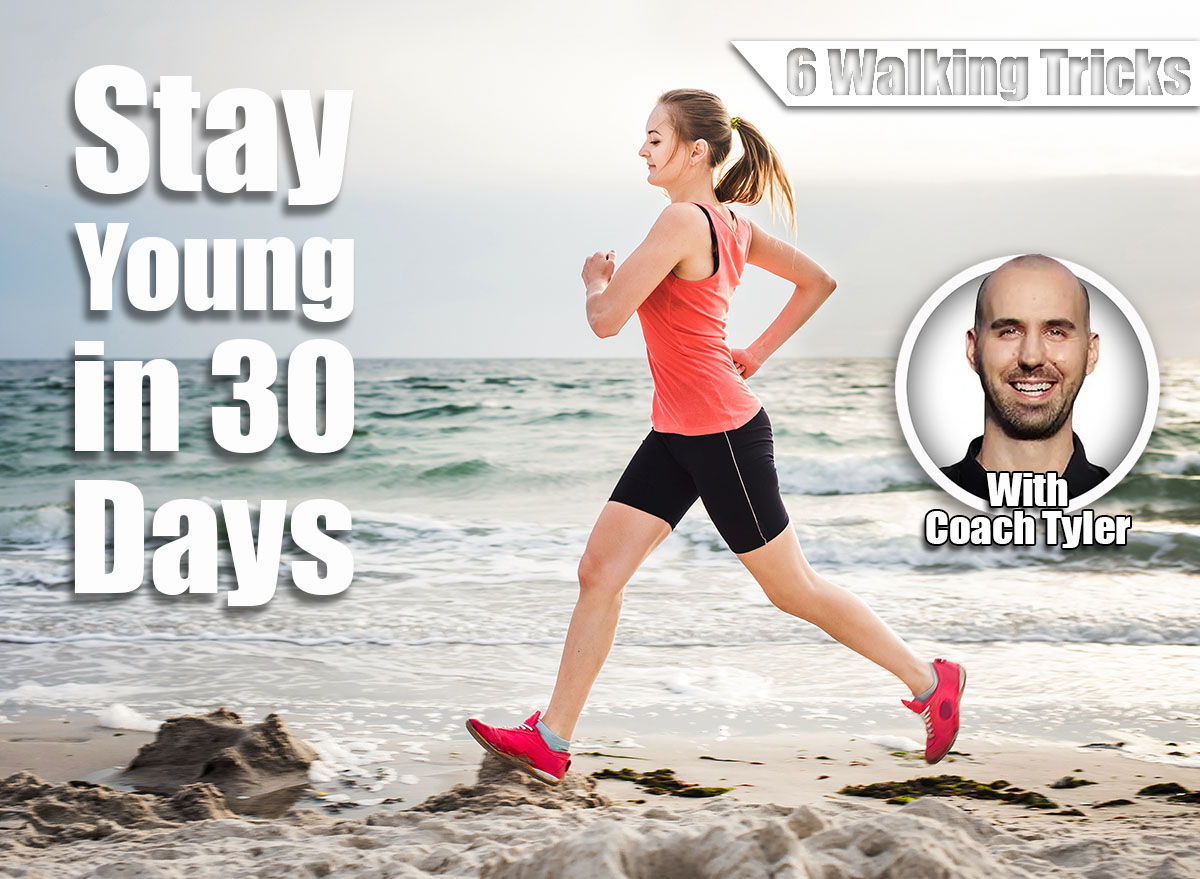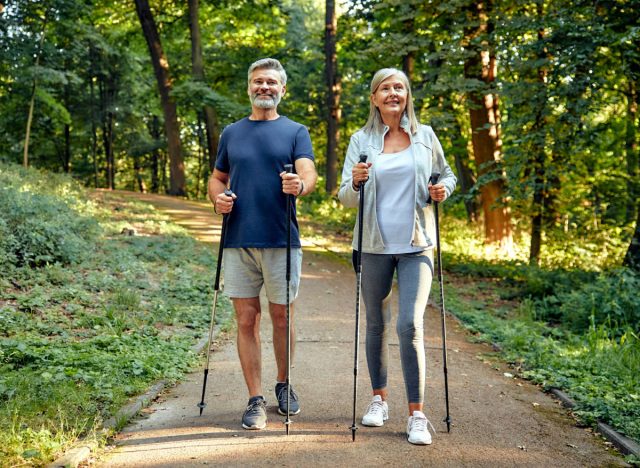6 Walking Tricks That Keep You Younger in Just 30 Days

Walking may look simple, but it’s one of the most powerful tools for staying strong, energized, and youthful after 40. Unlike high-impact training, it protects your joints while giving your heart and muscles a steady challenge. Done right, it does more than burn calories, it helps you move better, breathe easier, and feel sharper every day.
The key lies in how you walk. A few small changes in speed, posture, and routine transform walking from a basic activity into a full-body workout. These adjustments recruit more muscles, elevate your heart rate, and increase the anti-aging benefits. Think of walking not as casual movement, but as training that keeps your body younger.
With these habits, each step takes you closer to stronger legs, better endurance, and improved balance. Stay consistent for 30 days, and you’ll notice not just physical changes but also more energy in your daily life. Here’s how to make every walk count.
6 Walking Tricks That Keep You Younger After 40
Walk With Purpose

A casual stroll helps, but walking with purpose turns each step into training for your heart, lungs, and muscles. A brisk pace boosts blood flow, wakes up stiff joints, and keeps your energy high long after the walk is over. It’s the difference between simply moving and truly challenging your body to stay strong. By treating every walk as a workout, you’ll train your endurance while sharpening focus and posture.
How to Do It:
- Aim for a pace that leaves you slightly breathless but still able to talk.
- Keep your arms bent and swing them naturally.
- Stay tall with shoulders back and eyes forward.
- Maintain for at least 20 minutes daily.
Add Intervals
Steady walking has value, but mixing in intervals transforms it into a powerful fat-burning and endurance-building workout. Quick bursts of speed challenge your cardiovascular system while recovery phases let your body adapt and recharge. This variation not only builds stamina but also keeps walking engaging instead of repetitive. Over time, intervals push your limits and help you feel younger, stronger, and more resilient.
How to Do It:
- Warm up at a steady pace for 3 minutes.
- Walk fast for 1 minute, then recover for 2 minutes.
- Repeat this cycle 5–6 times.
- Finish with a 3-minute cooldown.
Engage Your Core

Good walking form goes far beyond your legs, your core drives balance, posture, and stability with every step. By bracing your midsection, you transform a simple walk into a low-impact ab workout. This protects your spine, strengthens deep abdominal muscles, and makes your stride more powerful. Over time, it builds the kind of stability that keeps you moving confidently as you age.
How to Do It:
- Stand tall with shoulders back and chest open.
- Pull your belly button gently toward your spine.
- Maintain this engagement throughout your walk.
- Practice daily to build lasting stability.
Walk Hills or Inclines

Flat ground builds endurance, but inclines add resistance that sculpts your lower body while challenging your lungs. Walking uphill fires up the glutes, hamstrings, and calves, giving you strength training benefits without equipment. It also forces your heart to work harder, creating a full-body workout in minutes. By mixing hills or incline treadmill sessions into your walks, you’ll build muscle and endurance at the same time.
How to Do It:
- Find a hill outdoors or set a treadmill to a 3–5% incline.
- Walk steadily, driving through your heels.
- Keep your chest lifted and avoid leaning forward.
- Include 5–10 minutes of incline walking per session.
Add Arm Movement
Your arms play a bigger role in walking than most realize. When you drive them with purpose, you recruit your shoulders, chest, and core for added calorie burn and balance. This turns a lower-body exercise into a full-body movement without adding complexity. Strong arm swings create rhythm, power, and coordination that make each walk feel more athletic.
How to Do It:
- Bend your elbows at 90 degrees.
- Swing your arms in sync with your steps.
- Keep the movement strong but controlled.
- Focus on fluid motion without crossing the midline.
Stay Consistent

No single walk changes your body, it’s the habit that creates results. Daily walking trains your muscles, strengthens your heart, and compounds benefits until they become impossible to ignore. By showing up every day, you condition your body to recover faster, move with less stiffness, and keep energy levels high. Consistency doesn’t just help you feel younger, it locks in the changes that make you stay younger.
How to Do It:
- Schedule your walk at the same time each day.
- Aim for at least 30 minutes of purposeful walking.
- Track your progress with a step counter or journal.
- Commit for 30 days to feel and see the difference.
Looking for more easy ways to lose fat? Here’s How Long Your Walking Workout Should Be To Shrink Belly Fat.